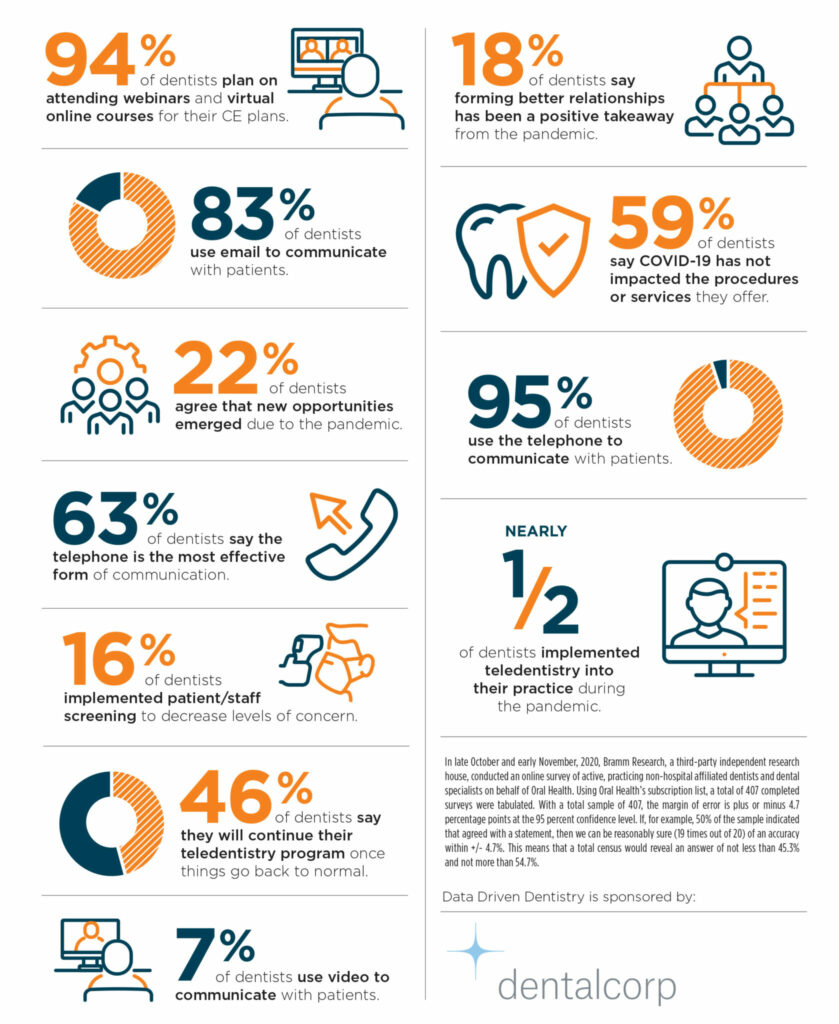Over the course of the COVID-19 pandemic, nearly half of dentists implemented teledentistry into their practice. Teledentistry benefitted the dental industry by providing an excellent way to provide care, such as diagnoses, education and treatment planning, to patients while following social distancing guidelines. According to our 2020 survey results, 75 percent of dentists found their teledentistry program to be a success! For example, if patients were uncomfortable coming into the office for safety reasons, they could still receive treatment, and having less patients in the office made it a safer space, with less of a chance to spread the virus.
However, in a post-pandemic world, are there benefits to keeping the teledentistry options at your practice or will they no longer be necessary? 53 percent of dentists don’t plan on keeping them but here’s why keeping teledentistry around might be what’s best for you.
It helps when building a trusting relationship with patients. They will be comforted knowing a dentist is available to speak with them outside of the typical office environment. As we all know, many people suffer from dental anxiety, which a video call could help alleviate before an in-office appointment. Not to mention, no mask is needed if conversing over video, and seeing your full face allows patients to have more of a personal connection to you.
For patients who live out in rural areas and do not have a dental office nearby, teledentistry would be a convenient option. Other groups, such as low-income households, may be in a similar position where travelling is an inconvenience. Virtual visits allow patients to be counselled or recommended treatment at a time and place that works for them before they make the long trip into the office for physical services. This ensures nobody’s time is wasted.
Dental emergencies are another great reason to keep your teledentistry services around. Many practices may have a dentist available 24 hours, or just during office hours, to tend to urgent care calls. With a video call, you will be able to better assess the situation and prescribe medication for the pain or make other recommendations until the patient is able to come in. In some cases, a specialty dentists will be needed, and you can make the referral right away.
Even if you are not interested in real time (or synchronous) teledentistry methods, then asynchronous methods are also available, where patients take photos and videos to send in for your review. Teledentistry programs are adaptable, and, at the end of the day, you should do whatever will be best for your practice.
As you can see, there are many reasons to continue providing teledentistry services, even as the world approaches a post-pandemic state. To keep the conversation going, let us know if your opinion on teledentistry has changed at all throughout the pandemic and if you plan on continuing your teledentistry program into the future! Tweet us at @oralhealthgroup.
As seen in the print issue of Oral Health August 2021













